Resource allocation based on fairness and QoS provisioning for OFDMA-WLAN system
2014-09-06BaoNanXiaWeiweiShenLianfeng
Bao Nan Xia Weiwei Shen Lianfeng
(National Mobile Communications Research Laboratory, Southeast University, Nanjing 210096, China)
Resource allocation based on fairness and QoS provisioning for OFDMA-WLAN system
Bao Nan Xia Weiwei Shen Lianfeng
(National Mobile Communications Research Laboratory, Southeast University, Nanjing 210096, China)
To satisfy different service requirements of multiple users in the orthogonal frequency division multiple access wireless local area network (OFDMA-WLAN) system downlink transmission, a resource allocation algorithm based on fairness and quality of service (QoS) provisioning is proposed. Different QoS requirements are converted into different rate requirements to calculate the QoS satisfaction level. The optimization object is revised as a fairness-driven resource optimization function to provide fairness. The complex resource allocation problem is divided into channel allocation and power assignment sub-problems. The sub-problems are solved by the bipartite graph matching and water-filling based method. Compared with other algorithms, the proposed algorithm sacrifices less data rate for higher fairness and QoS satisfaction. The simulation results show that the proposed algorithm is capable of providing QoS and fairness, and performs better in a tradeoff among QoS, fairness and data rate.
QoS (quality of service) satisfaction level; fairness driven function; bipartite graph matching; water-filling; resource allocation
The orthogonal frequency division multiple access (OFDMA) scheme has been intensively explored for offering greater flexibility in allocation of frequency resources[1]. IEEE 802.16e and the femtocell system also use the OFDMA to exploit multi-user diversity for higher network capacity[2]. It also has become the mainstream multiple access scheme for the downlink of the 3rd generation partner project long term evolution (3GPP LTE). Many researchers devote themselves to integrating the OFDMA technology into existing wireless communication networks by modifying the corresponding access algorithm[3-4]to solve the problems of multipath fading or multiple access interference[5]. A lot of documents focus on resource allocation of the OFDMA system for the maximum network throughput[6]and spectrum efficiency[7]by using centralized or distributed algorithms. Some researchers combine the OFDMA technology with cognitive radio technology and study on the resource management for resource sharing between primary and secondary networks to ensure that the second user does not interfere with the primary user[8-10]. The IEEE 802.11 work group has been trying to make standards for very high data rate wireless local area network (WLAN)[2]. Some technical improvements have been studied to integrate multiuser dynamic OFDMA into the IEEE 802.11 WLAN[11-12].
Since the OFDMA technology is important for multiuser system performance, many resource allocation algorithms have been studied for the OFDMA-based systems in the past few years. In the earliest studies, algorithms committed to find an efficient way to maximize the system sum rate with total power constraint[13-15]. Then, the users’ priority is considered during the resource allocation. Weighted sum-rate maximization and weighted sum-power minimization problems are proposed in Ref.[16] and solved by the Lagrange dual decomposition method. It is found that the complexity of the traditional optimization method is high; thus, the evolutionary algorithm is proposed to reduce the complexity[17-18]. However, these references only consider the sum rate. The disadvantage is that maximizing the data rate may lead to unfair transmission and unsatisfied quality of service (QoS), although providing fairness and QoS guarantee will decrease the system data rate. In recent years, QoS and fairness provisioning have been the important research aspects for network resource optimization. Sacchi et al.[19]proposed an OFDMA resource balance strategy based on the game theory, in which the object of optimization is the mean opinion score (MOS) but not data rate. By considering different QoS requirements of users, Ref.[20] integrated power control, relay selection and sub-carrier assign into resource allocation optimization to maximize system throughput, and supported QoS by QoS pricing. The optimal fair number of accessed real-time (RT) users and non-real-time (NRT) users is calculated in Ref.[21], but each RT user is only assigned one sub-channel and how to assign appropriate channels to users is not explained.
In the above references, different QoS requirements of different services are not considered in resource allocation. If the resource is allocated only for bringing the highest data rate, the heterogeneous QoS requirements cannot be satisfied. When a user with a lower rate requirement is assigned a good channel with a higher data rate, the resource is wasted and it is unfair for other users with higher data requirements. In this paper, channels are assigned according to different users’ QoS requests. Meanwhile, the fairness is considered in the allocation process. To prevent wasting of resources, channels should be properly allocated to users according to their demands. The optimization object is replaced by fairness-driven QoS satisfaction. The simulation results show that, the proposed resource allocation algorithm provides a better tradeoff among fairness, QoS guarantees of heterogeneous services and the system data rate.
1 System Model and Problem Formulation
As shown in Fig.1, the OFDMA technique is integrated into the WLAN downlink transmission by the frame aggregation scheme and the link adaption scheme. The channel state information (CSI), available spectrum opportunities and the user’s QoS request, which will be used in the allocation algorithm, are assumed to be available at the access point (AP) and remain unchanged during the allocation time period. AP assigns channels for downlink transmission and determines how much transmit power is allowed. The resource allocation results will be the input parameters of the frame aggregation and fragmentation module and the physical layer (PHY) processing module.

Fig.1 Downlink transmission model at the AP
Assume thatNstations (STAs) and one AP shareKsub-channels. In this paper, the resource allocation optimization problem can be described as maximizing the sum satisfaction on the condition of system constraints and QoS constraints. The problem formulations are given as follows:
(1)
s.t.

(2)
(3)
(4)
(5)
(6)

2 Resource Allocation for Different QoS Requirements and Fairness
2.1 QoS-based resource optimization problem
With the constraints in section 1, the optimal result of problem (1) is difficult to be found. To decrease the complexity of optimization, QoS constraints should be handled first. Note that the data rate should at least reach a lower bound, so that the packet error rate (PER) will be below the threshold and the packet will be delivered in time.
The PER can be expressed as the increasing function of the average bit error rate (BER), and the data rate can be expressed as the decreasing function of the BER. So constraint (3) can be converted into the same form as constraint (5).
(7)

For packets with the time delay threshold, the data rate at the current slot should be large enough to ensure that the most urgent packet can be delivered in time. Since the data rate can be expressed as the decreasing function of the past time after the urgent packet is created, constraint (4) can be converted into the same form as constraint (5).
(8)

Now different QoS requirements can be converted into different data rate requirements. According to problem formulations given in section 1, each user’s QoS satisfaction is evaluated by the QoS satisfaction level (QSL), which is given as
(9)

So the QoS-based resource optimization problem can be expressed as
(10)
s.t.
constraint (2) and constraint (6)
2.2 Fairness-driven resource optimization problem
Problem (10) is a nonlinear programming problem. By relaxing integer constraint (2) to continuous values in range [0,1], problem (10) becomes convex and the optimal result is easy to be found by solving the Lagrangian function. However, problem (10) does not reflect the fairness allocation. Resource may be only assigned to the user with the highest data rate requirement. To achieve fairness, problem (10) can be revised by a fairness-driven utility function[23]as
(11)
s.t.
constraint (2) and constraint (6)
It is difficult to solve problem (11) because it involves two log functions. One of the log functions is the Shannon formula used for calculating data rate in Eq.(9). The optimal solution cannot be calculated by the Lagrangian function directly, so problem (11) is divided into several small problems to find a suboptimal solution. The channel allocation will be solved first, and then the power will be assigned based on the channel allocation result.
Given average power assignment, each user can calculate the fairness-driven utility log(si) on each channel. Assume that the number of users is equal to the number of channels. The channel allocation problem can be solved by bipartite graph matching. As shown in Fig.2, letxset include all users, andyset include all the channels. Let the weight of edge is the fairness-driven utility. The object of optimal matching is the object of the maximization problem (11).
The channel allocation set can be calculated as
(12)
s.t. constraint (2)
Given the channel allocation set, the power assignment
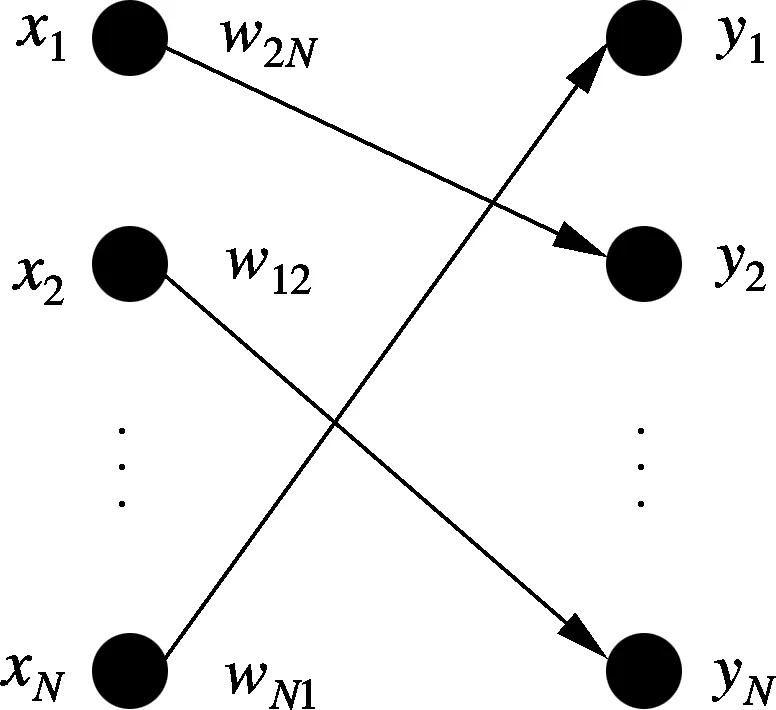
Fig.2 Bipartite graph matching for channel allocation
can be solved by the water-filling-based method. The object of power assignment is the same as the object of problem (10). According to Ref.[22], the transmission power is assigned as
(13)

2.3 Resource allocation based on fairness and QoS provisioning
According to the above analysis, the steps of the proposed algorithm for resource allocation based on fairness and QoS provisioning (RAFQ) can be given as follows:
1) Collect information: The AP collects CSI, available spectrum opportunities and QoS requirements of each user. Different QoS requirements will be converted into different data rate requirements. All the information should be collected at the beginning of every resource allocation circle.
2) Channel allocation: Given the average power assignment, AP calculates the channel allocation set by solving Eq.(12).
3) Power assignment: Given the channel allocation set, AP calculates the power assignment result by solving Eq.(13).
4) Repeat step 1) to 3) at every resource allocation circle.
3 Simulation Results
In this section, the performance of the proposed algorithm is evaluated and compared with three other algorithms which are discussed in Ref.[22]. The first algorithm is the maximum rate resource allocation algorithm (MRRA), in which the resource is always allocated to the user bringing the highest data rate. The second algorithm is the QoS provisioning channel allocation (QPCA) algorithm proposed in Ref.[21], in which the channel bringing the highest data rate is assigned to the user with the highest QSL. The third algorithm is the spectrum allocation based on the general genetic (SAGG) algorithm proposed in Ref.[17], but the fitness function is replaced by the QSL. All the parameters used in the simulation are summarized in Tab.1. Channels between the AP and wireless users are modeled as parallel AWGN channels with different channel gains. Each channel can only be allocated to one user.
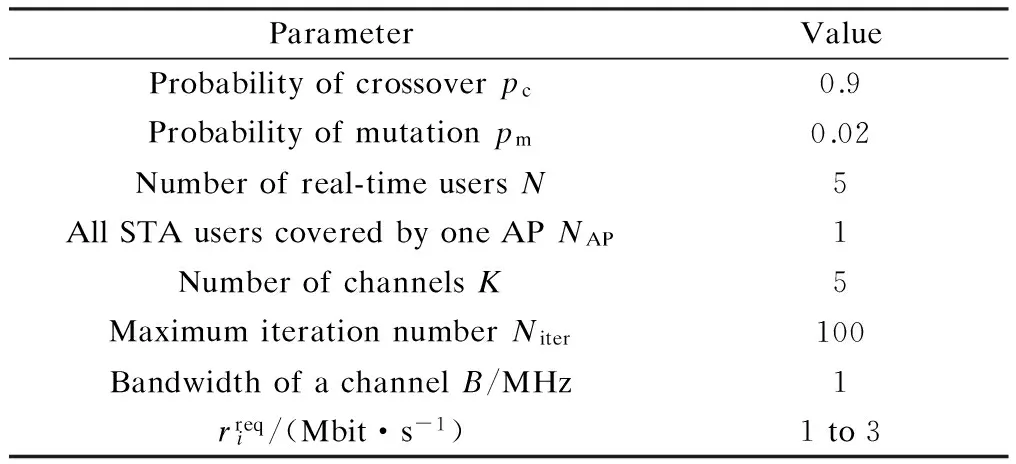
Tab.1 Parameters used for evaluation
A fairness index[24]is used to evaluate the fairness performance of different algorithms. A higher value ofd(x) implies a higher degree of fairness.
(14)
In Fig.3, the QSL of user 1 is much lower than that of user 3 when there is no fairness consideration. But with fairness consideration in the proposed algorithm, the QSL of user 1 is greater than that of user 3. This means that some resource of user 3 is re-allocated to user 1 to provide fair allocation. The fairness index with fairness consideration is 0.814 4, and the fairness index without fairness consideration is 0.698 4. The value increases by 16.61%, which means that the fairness of resource allocation is improved.
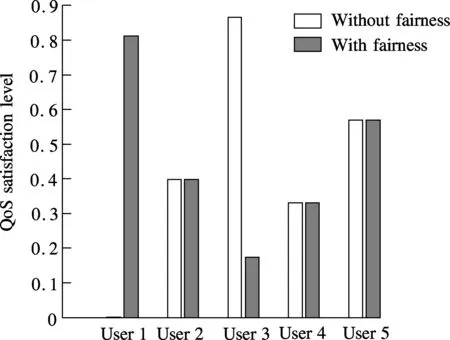
Fig.3 The QSL of RAFQ with/without considering fairness
This result is also confirmed by Fig.4, in which the fairness index of the proposed algorithm is higher than that of other algorithms. In three other algorithms, the object of power assignment is the sum rate; the power is assigned to improve some users’ data rate while some others’ requirements are ignored. Thus the fairness index of the QPCA algorithm decreases after the power allocation. Fig.4 shows that the fairness performance of the proposed algorithm is better than those of three other algorithms.
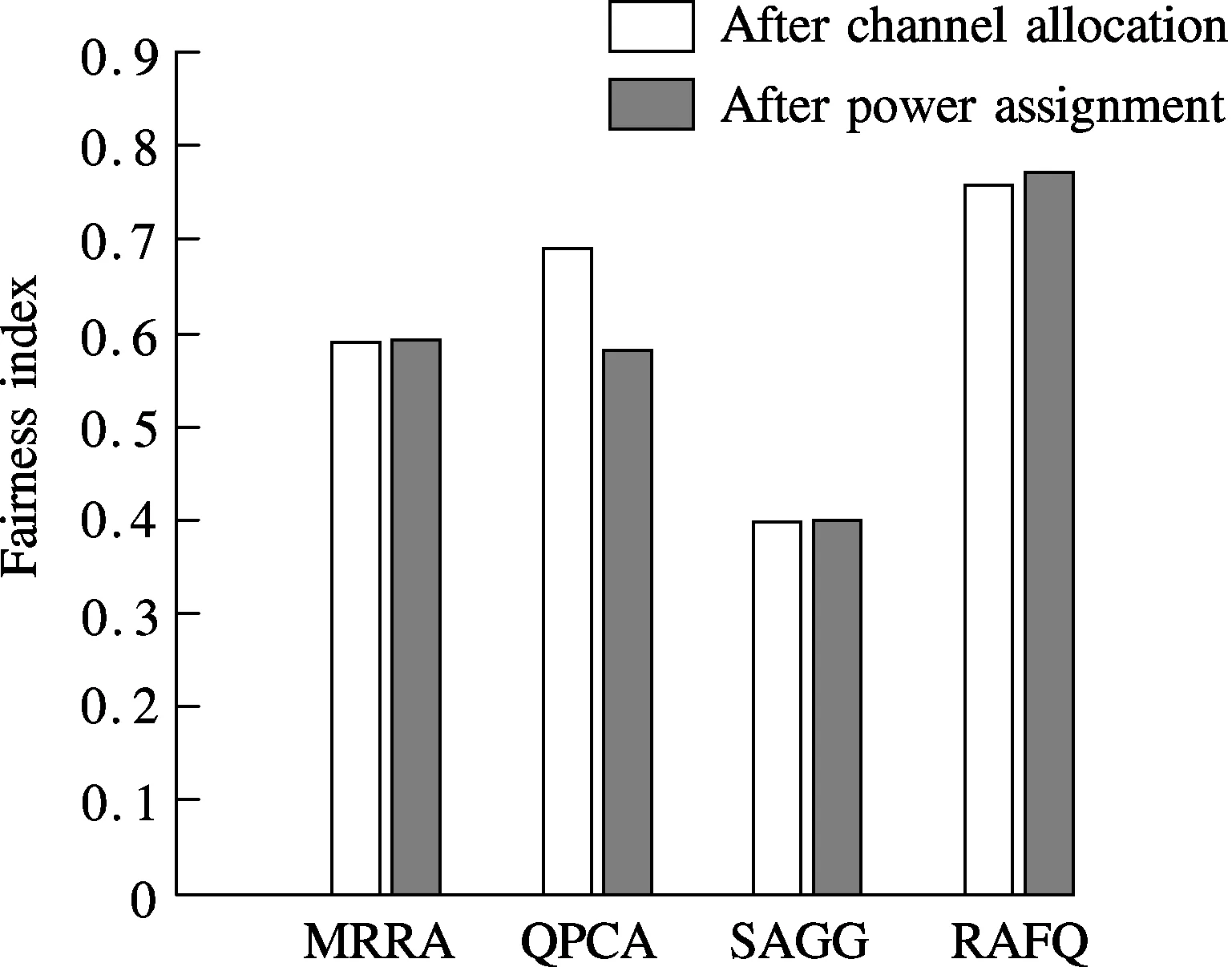
Fig.4 Comparison of fairness index
The total QSL comparison is given in Fig.5. The proposed algorithm has the highest total QSL value. It reveals that the RAFQ algorithm can provide different QoS guarantees and fairness. However, the RAFQ algorithm does not have the highest sum rate in Fig.6. This is because the data rate is not the only target in the RAFQ algorithm; different QoS requirements are integrated into QoS satisfaction level; and the resource allocation process is driven by the fairness. The proposed algorithm sacrifices

Fig.5 Comparison of total QSL
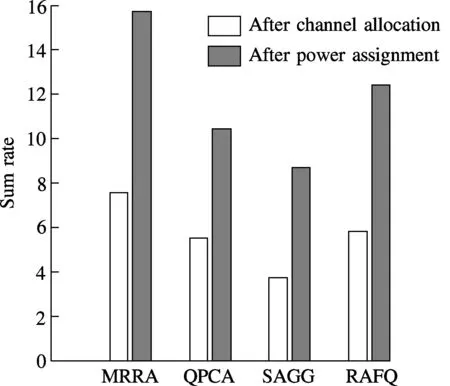
Fig.6 Comparison of sum rate
some data rate to the QoS and fairness guarantee, but it can still obtain the second-highest data rate when it compares with other algorithms. So it is a good trade off among the data rate, QoS and fairness.
4 Conclusion
In this paper, a resource allocation algorithm is proposed for dynamic resource optimization with QoS and fairness guarantee. The system model is presumed as the OFDMA-WLAN downlink transmission system. Different QoS requirements of multiple users are converted into different data rate requirements, which are integrated into the QoS satisfaction level. The fairness-driven utility function is used to provide user fairness. The channels are allocated through bipartite graph matching. Power assignment is solved by the water-filling-based method, in which the correction factor is used to obtain fairness. The proposed RAFQ algorithm is compared with three other algorithms on total QSL, fairness index and sum rate. The simulation results show that the proposed algorithm improves fairness and QoS satisfaction with less data rate sacrifice, and performs a good tradeoff among QoS, fairness and data rate.
[1]Wong I C, Evans B L. Optimal downlink OFDMA resource allocation with linear complexity to maximize ergodic rates [J].IEEETransactionsonWirelessCommunications, 2008, 7(3): 962-971.
[2]Sahin M E, Guvenc I, Jeong M-R, et al. Handling CCI and ICI in OFDMA femtocell networks through frequency scheduling [J].IEEETransactionsonConsumerElectronics, 2009, 55(4): 1936-1944.
[3]Alnuweiri H M, Fallah Y P, Nasiopoulos P, et al. OFDMA-based medium access control for next-generation WLANs [J].EURASIPJournalonWirelessCommunicationsandNetworking, 2009, 2009: 512865-01-512865-09.
[4]Wang D D, Minn H, Al-Dhahir N. A distributed opportunistic access scheme and its application to OFDMA systems [J].IEEETransactionsonCommunications, 2009, 57(3): 738-746.
[5]Jung Junwoo, Lim Jaesung. Group contention-based OFDMA MAC protocol for multiple access interference-free in WLAN systems [J].IEEETransactionsonWirelessCommunications, 2012, 11(2): 648-658.
[6]Mokari N, Navaie K, Khoshkholgh M G. Downlink radio resource allocation in OFDMA spectrum sharing environment with partial channel state information [J].IEEETransactionsonWirelessCommunications, 2011, 10(10): 3482-3495.
[7]Ngo D T, Tellambura C, Nguyen H H. Efficient resource allocation for OFDMA multicast systems with spectrum-sharing control [J].IEEETransactionsonVehicularTechnology, 2009, 58(9): 4878-4889.
[8]Mitran P, Le L B, Rosenberg C. Queue-aware resource allocation for downlink OFDMA cognitive radio networks [J].IEEETransactionsonWirelessCommunications, 2010, 9(10): 3100-3111.
[9]Choi K W, Hossain E, Kim D I. Downlink subchannel and power allocation in multi-cell OFDMA cognitive radio networks [J].IEEETransactionsonWirelessCommunications, 2011, 10(7): 2259-2271.
[10]Ngo D T, Tellambura C, Nguyen H H. Resource allocation for OFDMA-based cognitive radio multicast networks with primary user activity consideration [J].IEEETransactionsonVehicularTechnology, 2010, 59(4): 1668-1679.
[11]Kwon Hojoong, Seo Hanbyul, Kim Seonwook, et al. Generalized CSMA/CA for OFDMA systems: protocol design, throughput analysis, and implementation issues [J].IEEETransactionsonWirelessCommunications, 2009, 8(8): 4176-4187.
[12]Valentin S, Freitag T, Karl H. Integrating multiuser dynamic OFDMA into IEEE 802.11 WLANs-LLC/MAC extensions and system performance [C]//IEEEInternationalConferenceonCommunications. Beijing, China, 2008: 3328-3334.
[13]Jang J, Lee K. Transmit power adaptation for multiuser OFDM systems [J].IEEEJournalonSelectedAreasinCommunications, 2003, 21(2): 171-178.
[14]Jiao W, Cai L, Tao M. Competitive scheduling for OFDMA systems with guaranteed transmission rate [J].ElsevierComputerCommunications,SpecialIssueonAdaptiveMulticarrierCommunicationsandNetwork, 2009, 32(3): 501-510.
[15]Tao M, Liang Y C, Zhang F. Resource allocation for delay differentiated traffic in multiuser OFDM systems [J].IEEETransactionsonWirelessCommunications, 2008, 7(6): 2190-2201.
[16]Seong K, Mohseni M, Cio J M. Optimal resource allocation for OFDMA downlink systems [C]//IEEEInternationalSymposiumonInformationTheory. Seattle, WA, USA, 2006: 1394-1398.
[17]Zhao Zhijin, Peng Zhen, Zheng Shilian, et al. Cognitive radio spectrum allocation using evolutionary algorithms [J].IEEETransactionsonWirelessCommunications, 2009, 8(9): 4421-4425.
[18]Koudouridis G P, Qvarfordt C, Cai T, et al. Partial frequency allocation in downlink OFDMA based on evolutionary algorithms [C]//2010IEEE72ndVehicularTechnologyConferenceFall(VTC 2010-Fall). Ottawa, ON, CAN, 2010: 1-5.
[19]Sacchi C, Granelli F, Schlegel C. A QoE-oriented strategy for OFDMA radio resource allocation based on min-MOS maximization [J].IEEECommunicationsLetters, 2011, 15(5): 494-496.
[20]Zhang Danhua, Wang Youzheng, Lu Jianhua. QoS aware resource allocation in cooperative OFDMA systems with service differentiation [C]//IEEEInternationalConferenceonCommunications. Cape Town, RSA, 2010: 1-5.
[21]Alshamrani A, Shen X M, Xie L L. QoS provisioning for heterogeneous services in cooperative cognitive radio networks [J].IEEEJournalonSelectedAreasinCommunications, 2011, 29(4): 819-830.
[22]Bao Nan, Li Junchao, Xia Weiwei, et al. QoS-aware resource allocation algorithm for OFDMA-WLAN integrated system [C]//2013IEEEWirelessCommunicationsandNetworkingConference. Shanghai, China, 2013: 807-812.
[23]Peng Chunyi, Zheng Haitao, Zhao Ben Y. Utilization and fairness in spectrum assignment for opportunistic spectrum access [J].MobileNetworksandApplications, 2006, 11(4): 555-576.
[24]Jain R, Chiu D, Hawe W. A quantitative measure of fairness and discrimination for resource allocation in shared computer systems [R]. Hudson: Digital Institution Corporation, 1984.
基于公平性和QoS保障的OFDMA-WLAN系统资源分配
鲍 楠 夏玮玮 沈连丰
(东南大学移动通信国家重点实验室,南京 210096)
为了满足OFDMA-WLAN系统下行通信中多用户的不同业务需求,提出一种基于公平性和QoS服务保障的资源分配算法.不同的QoS要求被转换成不同的速率要求来计算QoS满意等级;优化目标被修改为公平性驱动的优化函数以提供公平性保障;复杂的资源分配问题被划分为信道分配和功率分配问题,并通过二分图匹配和注水法得到分配结果.与其他算法相比,所提出的算法牺牲了较少的数据速率换取更高的公平性和QoS满意度.仿真结果表明所提算法具有保障QoS和公平性的能力,且在QoS、公平性和速率之间权衡折中时表现更好.
QoS满意等级;公平性驱动函数;二分图匹配;注水法;资源分配
TN915
s:The National Science and Technology Major Project (No.2012ZX03004005-003), the National Natural Science Foundation of China (No.61171081, 61201175), the Science and Technology Support Program of Jiangsu Province (No.BE2011187).
10.3969/j.issn.1003-7985.2014.01.001
:Bao Nan, Xia Weiwei, Shen Lianfeng. Resource allocation based on fairness and QoS provisioning for OFDMA-WLAN system[J].Journal of Southeast University (English Edition),2014,30(1):1-6.
10.3969/j.issn.1003-7985.2014.01.001
Received 2013-09-14.
Biographies:Bao Nan (1985—), female, graduate; Shen Lianfeng (corresponding author), male, professor, lfshen@seu.edu.cn.
猜你喜欢
杂志排行
Journal of Southeast University(English Edition)的其它文章
- Wavelet transform and gradient direction based feature extraction method for off-line handwritten Tibetan letter recognition
- Analyses of unified congestion measures for interrupted traffic flow on urban roads
- Conditional autoregressive negative binomial model for analysis of crash count using Bayesian methods
- Design and analysis of traffic incident detection based on random forest
- Biodegradation of microcystin-RR and-LR by an indigenous bacterial strain MC-LTH11 isolated from Lake Taihu
- Inverse kinematic deriving and actuator control of Delta robot using symbolic computation technology
